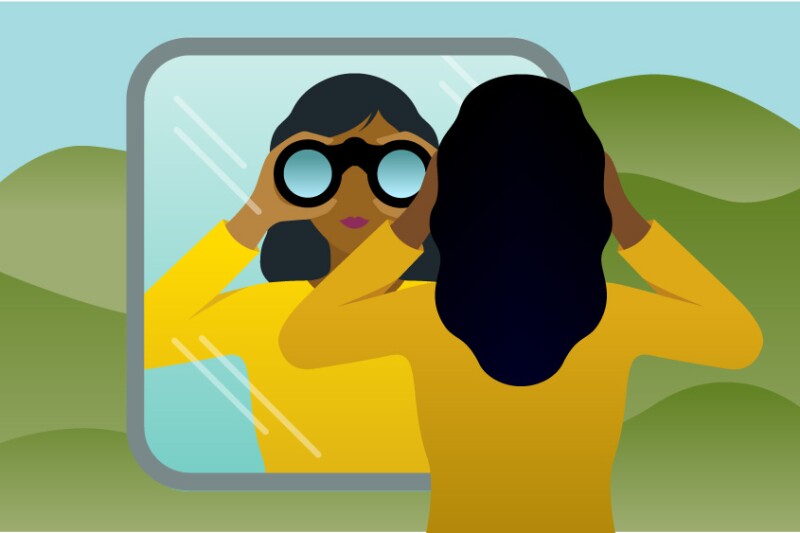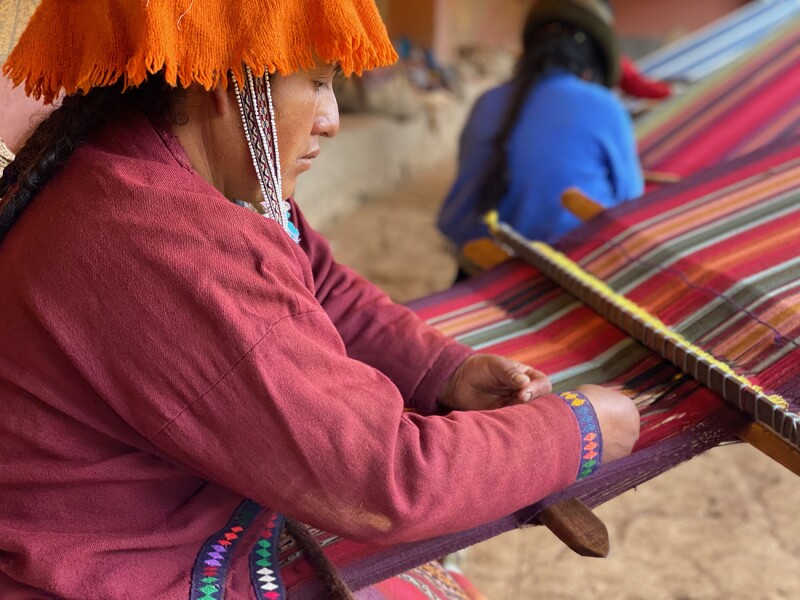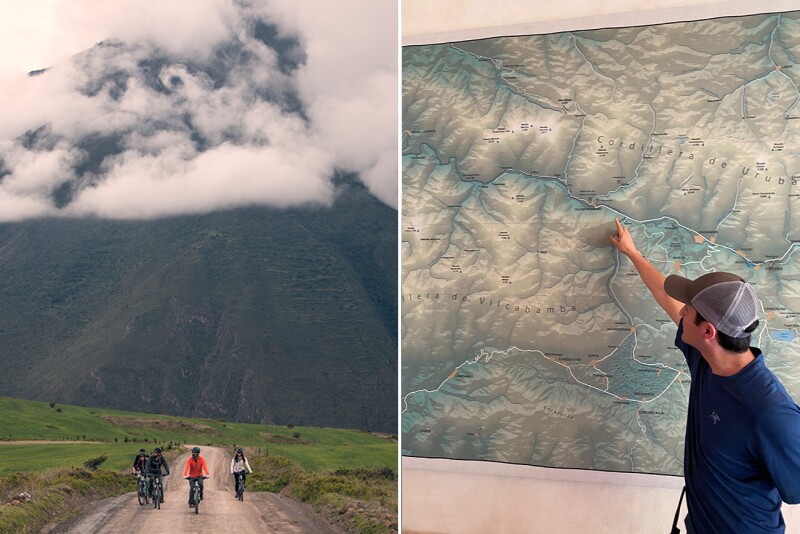As I entered Machu Picchu, one of the seven wonders of the world and an undeniably important historical site with deep spiritual significance, my first thought was: Don’t jump. Because I’d read that people jumping up and down on the Inca ruins, presumably for the benefit of their insatiable Instagram feeds, was causing Machu Picchu to, slowly but surely, sink. Of course, I’d seen those pictures and of course I wanted one, too. But, as a person who tries to be literally and figuratively mindful of my own footprint when I travel, I was clear that, no matter how much I wanted that photo, I was not going to jump.
One paradox of travel today is that while social media has made overtourism and drive-by tourism a real crisis, the performative aspects of social media—where we demonstrate our wokeness to our friends—are also making more of us aware of the effect our actions have on the world, or at least how our actions are perceived by others. Which hopefully opens the door to a broader set of genuine questions: What does it mean to be a more conscious, ethical traveler in the 21st century? As a political commentator in the United States and author of a book on ethics and civility worldwide, I inevitably see my own love of travel as an extension of my broader social justice identity. But until confronting that dilemma on Machu Picchu, I’d never really spelled out what that means.
It made me wonder: What other steps can conscious travelers take to minimize their footprint—geopolitically, environmentally—and maximize their positive impact when traveling? And how to do it without being that proverbial wandering hippie who only does home stays and whose sole souvenir is a bar of soap from a bus station bathroom? Because I am not that traveler. I take three to four international work trips each year for speeches or nonprofit consulting projects, an additional one or two trips abroad with my family, and I might travel domestically a couple times per month—and throughout it all, I want to be comfortable. I like luxury hotels or at least cute boutique hotels and, for that matter, cute boutique hotel showers (ideally with those rainwater showerheads). And when it comes to souvenirs, hypothetically speaking, I might lean toward, oh maybe, a cropped jacket made out of baby alpaca wool with a belt that cinches at the waist?
After meditating on these questions (including, yes, under several rainwater showerheads) and asking traveling friends, I’ve developed a loose framework for ethical travel.

As travelers, how can we reconceptualize our trips to think more about how the people we encounter can get more from us than we get from them?
Photo by Roger Lemoyne
1. Understand the power dynamics in our trips and be as humble as possible.
In November 2019, just moments after I arrived in Dharamsala, India—home of His Holiness the Dalai Lama and the Tibetan government in exile—my friend Michael Littig said something that stopped my brain in its tracks. I was leading a learning trip with Littig, cofounder of the entrepreneur training organization, the Zuckerberg Institute, and he challenged us to think about how the people we encountered—Tibetan Buddhist monks and activists and former political prisoners—could get more out of our visit than we got from them. I kept thinking about his point during our meditation sessions. I’m still thinking about it. How do you think about visiting a place and leaving more of yourself than you take without relying on a belittling belief that this other place, and the people in it, need something you have—a sort of touristic iteration of imperialism?
As I’ve traveled, I’ve discovered that these power dynamics can play out anywhere in the world, whether we’re traveling from the Global North to the Global South or traveling from New York City to Appalachia or Kansas City, where we all risk consciously or unconsciously looking down our noses on others. Thankfully, many other travelers have evolved too and now see travel as a way of confronting global inequity and oppression. I went to Dharamsala in part to shed light on the ongoing injustice of Tibetan occupation and exile, speaking to elite audiences who have turned a blind eye, but Littig’s question pushed me to go deeper.
2. Stop using the word “exotic.”
I was in law school in New York City in my mid-20s when I stopped using the word “exotic.” Being from eastern Pennsylvania, mind you, I thought that pretty much anything other than fried dough and flannel was otherworldly and I was using “exotic” to describe everything from sushi to leopard-print boots. Of course, I was a student in a city that wasn’t my own either, but I hadn’t learned to see my own hypocrisy yet. But I saw the “other” quite clearly and labeled them so until a friend who was definitely better read than anyone else I knew at the time told me about Edward Said and his book Orientalism. In it, Said points out how “the West,” in literature and politics and beyond, tended to take a stance toward “the East” that was condescending and oppressive. Learning that words like “exotic” and “primitive” aren’t quaint but controlling—a way of fetishizing difference—opened my eyes, though it’s taken me years to fully absorb the lesson.

3. Focus on learning: about others, about ourselves.
As an upper-class white New Yorker traveling elsewhere in our country or in our world, I’ve come to think the answer has something to do with appreciating that my background, perspective, and nation’s history are not perfect. In addition to learning about others on my travels, I must actively work to learn about my own culture and my own blind spots.
In 2004, I went to Laos with my friend Channapha Khamvongsa, who fled the country as a child and resettled in the United States. Until that trip, I probably couldn’t have located Laos on a map and certainly didn’t know anything about Lao culture or history. I didn’t know, for example, that my country, the United States, had dropped more than 2 million tons of bombs on Laos during a secret military operation between 1964 and 1973. As we traveled through Luang Prabang and Vientiane, I learned that the bombings—which amounted to a planeload of bombs being dropped every 8 minutes, 24 hours a day for 9 years—give Laos the unfortunate distinction of being the most heavily bombed nation in the world. Meanwhile, up to a third of the bombs the United States dropped did not explode and now dot the country’s landscape. People continue to die because the United States hasn’t cleaned up the unexploded ordnance.
Khamvongsa is founder of the organization Legacies of War, which connects the Lao diaspora in America to support communities in Laos and brings pressure on the U.S. government to clean up its mess. Traveling with her in Laos was eye-opening—to learn this history not through books or articles but by meeting children who were orphaned because of bombs, and women who’d lost legs, and whole communities that couldn’t safely farm their land. When we travel, it can be easy to avoid the hard parts—the oppression of the past or even the inequality and suffering of the present. And I’m not saying we can’t enjoy sightseeing and the hotel spa, nor should a trip just be about witnessing suffering, which can veer dangerously toward exploitative “poorism” travel. But one simple, practical extension of tourism humility is recognizing that the place we’re traveling to has something to teach us—and we have things we need to learn.

Buying a locally made souvenir—such as a bracelet from the Chawaytire weaving collective in Peru—is one way to support local communities.
Photo by Sally Kohn
4. Spend our money as locally and responsibly as possible.
We can have all the above in our minds and still buy cheap rugs woven by indentured child laborers in which case, really, what good are all our supposed principles? As travelers, we also have the opportunity to act in concrete ways that pave a better future. For instance, my friend the historian, anthropologist, and poet Dr. Maytha Alhassen practices what she calls “ethical bougie” travel. Wherever she goes, she makes a point of “centering high-quality goods and experiences that guarantee a virtuous supply chain for laborers and Mama earth.” Instead of buying cheaply made souvenirs, she looks for special items with an origin story, asking questions about how they were produced and where the materials came from. For instance, while traveling in Beirut, she avoided the big chain stores and tourist markets; instead, she wandered the boutiques, where she bought a handmade dress from a Lebanese designer. It’s not always easy to ID unique and sustainable souvenirs, but here’s a place to begin. If you’re unsure about an item, if you want to be more intentional, do your research ahead of time to find emerging or independent designers or, in a pinch, ask your hotel concierge.
I thought of this recently in Peru. My daughter, dazzled by all the street vendors in the Sacred Valley, spent her Christmas money on a cheap woven poncho. I shouldn’t have let her buy it, but it was a weak moment of parenting trying to stave off an altitude-induced tantrum.
Later, my family and I visited the Chawaytire weaving collective. There, we met the men and women who belong to the collective, learned about the herbs and crushed bugs and even fermented urine that they use to dye their alpaca wool, and we watched them weave ponchos and hats and bracelets far more intricate and beautiful than the ones in the tourist market. They were also more expensive—maybe $6 for a bracelet instead of $2—but I think the difference is worth it in every sense.

At the Explora Valle Sagrado in Peru, guides are full-time staff, and most actually live at the hotel.
Left: Explora; Right: Sally Kohn
5. Spend our time locally and responsibly, too.
It was Explora that took us to the weaving collective, way up in a remote mountain village, just after we’d finished an hour-long trek around a lake located high above the clouds. I enjoyed the Explora, not only because it’s the only hotel I’ve ever stayed at that had an orientation presentation with slides about sustainability and the destructive history of colonialism in the region, but also because of its excursion program. Daily hikes, bike trips, and cultural visits are included in the cost of lodging, and Explora’s team of guides aren’t folks the company just subcontracts when they need them. These guides are full-time staff and most actually live at the hotel. The upstairs-downstairs-esque aspect of being a fancy traveler in the midst of often struggling local communities is wonderfully upended when you’re sitting at the hotel juice bar next to a staff person who grew up in the next village, and they’re enjoying the same food and drinks you are.

Illustration by Alice Cho
6. Minimize our carbon footprint
But what do I do about the fact that I’m doing all this travel thanks to a giant carbon-gushing metal bird? Doesn’t that just cancel out all my ethical good intentions? When it comes to the health of the planet, airplanes account for only 2.5 percent of global carbon emissions but if I take at least one big international trip per year, that flight probably accounts for a disproportionate share of my total carbon footprint. For instance, according to the Guardian, even a relatively short haul flight from London to Edinburgh emits more carbon that the average Ugandan emits in an entire year. Plus even though planes are becoming more fuel efficient, because of growing demand the United Nations estimates that carbon emissions from air travel will triple by 2050. I’m not suggesting we don’t fly—AFAR still believes that travel is one of the greatest forms of wealth distribution on the planet. But there are ways to minimize our impact. If you can, take a train—trains are better than planes, buses, or cars when it comes to carbon emissions. If you have to fly, direct flights are better for the planet (since planes burn the most fuel during takeoff). You can also buy carbon offsets, though under a U.N. agreement, by 2021 international airlines will have to offset their own emissions directly.

Illustration by Alice Cho
7. Hashtag with care
There’s a cliff jutting out over a lake in Norway called “Trolltunga,” or troll’s tongue. Before 2010, maybe 800 people a year made the hike to the remote hunk of rock. But now, because of social media, more than 80,000 people per year make the trek. That includes a 24-year-old Australian tourist who, in 2015, fell off the cliff and died while posing for a photo.
At its best, social media is a mixed blessing. Who among us hasn’t put a travel destination on our bucket list because we saw it on social media (again, I’m looking at you, Machu Picchu), only to go there and feel like we’re lemmings in a social experiment and also pissed that our pics don’t look as good as someone else’s? Social media has forever changed the way we travel. But it doesn’t have to change our values.
Iceland, which has seen its tourism quadruple fueled in part by social media “overtourism,” recently introduced a responsible tourist pledge that, among other things, asks travelers to leave places as they find them, not venture off marked paths, and “take photos to die for, without dying for them.” More countries, including New Zealand, Finland, and Palau, appear to be following Iceland’s lead and trying to steer tourists toward less crowded destinations. But of course if we go to more hidden spots, and then geotag them on Instagram, aren’t we part of the problem?
If ever I need encouragement to find my own path, I check out @insta_repeat on Instagram, which brilliantly captures dozens upon dozens of similar images, often from the exact same places around the globe. I’ve been experimenting with taking a day off from social media while traveling—I’m working toward spending a day without my phone. Research suggests we remember moments better if we don’t photograph them. And if some of what makes travel special is having our own special moments, I’ve come to believe that means not broadcasting them—or at least not all of them—to the universe.
>>Next: Eight Ways to Lessen Your Impact as a Traveler











